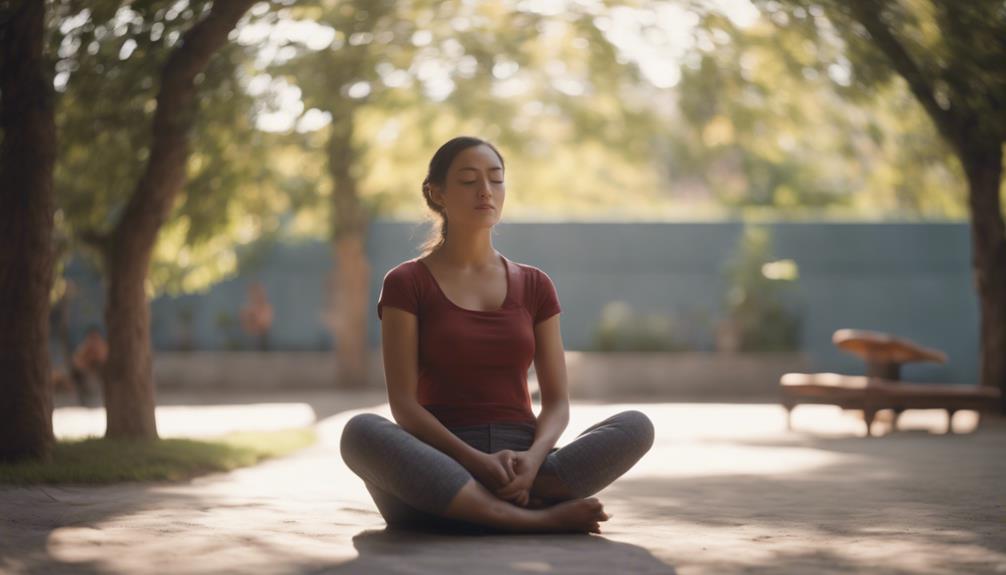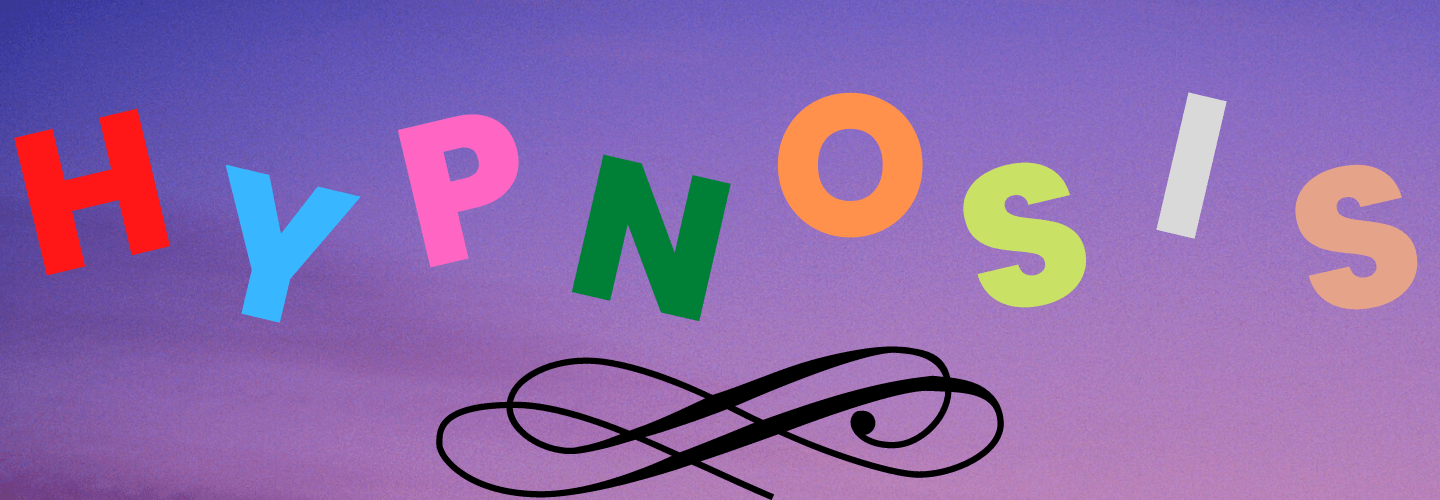
Discover the power of self-hypnosis for ultimate relaxation. Methods like Progressive Muscle Relaxation promote deep calmness and body awareness. Visualization techniques calm the mind by painting peaceful mental images. Autogenic Training self-suggestions deepen relaxation. Enhance hypnotic experience with positive affirmations and deep breathing. Build rapport in hypnosis for a strong connection. Utilize direct suggestions for behavior change and tap into subconscious for wellness. Achieve mental clarity with focused routines like mindfulness and exercise. Self-hypnosis offers personalized tranquility and control over thoughts. Start your journey to relaxation with qualified guidance and clear intentions. Tap into the potential of self-hypnosis for unbreakable peace.
Key Takeaways
- Progressive Muscle Relaxation Technique for deep relaxation and stress management.
- Visualization for Relaxation with peaceful mental imagery and stress reduction.
- Autogenic Training Method for deep relaxation and improved well-being.
- Incorporate deep breathing and positive affirmations in self-hypnosis practice.
- Establish rapport and use direct suggestions for behavior modification in hypnosis.
Benefits of Self-Hypnosis for Relaxation
In the domain of relaxation techniques, self-hypnosis emerges as a powerful tool with proven benefits for reducing stress and anxiety levels, promoting deep relaxation, and enhancing overall well-being. Self-hypnosis techniques offer a unique approach to relaxation by tapping into the power of the mind to foster a sense of calm and tranquility. Research indicates that practicing self-hypnosis can lead to a significant reduction in stress levels, helping individuals manage their anxiety more effectively.
One of the key advantages of self-hypnosis is its ability to improve sleep quality and duration, ultimately contributing to better overall relaxation. By engaging in self-hypnosis before bedtime, individuals can create a more conducive mental state for falling asleep and experiencing restful slumber. This practice not only enhances relaxation but also rejuvenates the mind and body, setting the stage for a more productive and fulfilling day ahead.
Moreover, self-hypnosis techniques are designed to guide individuals towards a calm and peaceful state of mind, enabling them to release emotional stress and tension. By incorporating self-hypnosis into their daily routine, individuals can cultivate a profound sense of relaxation and well-being, fostering a positive outlook on life. Overall, self-hypnosis stands out as a valuable tool for promoting relaxation, reducing stress, and nurturing a harmonious balance between the mind and body.
Progressive Muscle Relaxation Technique
Progressive Muscle Relaxation Technique is a powerful method for achieving deep relaxation by systematically tensing and releasing muscle groups.
This technique allows individuals to focus on each body part, releasing tension and promoting a state of calmness.
Through PMR, one can experience a profound sense of relaxation and relief from stress.
Muscle Tension Release
How can individuals effectively release muscle tension and promote relaxation using a proven technique known as Progressive Muscle Relaxation (PMR)?
PMR involves the systematic tensing and relaxing of specific muscle groups to reduce muscle tension, stress, and anxiety levels. This practice enhances body awareness, allowing individuals to identify and release areas of tension, leading to a state of deep relaxation.
By incorporating PMR into a daily routine, individuals can experience improved sleep quality, decreased physical discomfort, and an overall sense of well-being. Regular practice of PMR can greatly enhance stress management skills, helping individuals achieve a calmer state of mind and a more relaxed body.
Embrace the power of Progressive Muscle Relaxation for a healthier, more peaceful life.
Body Part by Part
Utilizing a systematic approach known as the Body Part by Part technique, individuals can effectively engage in Progressive Muscle Relaxation to release tension and achieve deep relaxation throughout their entire body. This technique involves tensing and then relaxing each muscle group, promoting body awareness and reducing stress.
By systematically engaging and releasing muscle groups, individuals can identify and release tension, leading to improved sleep quality and reduced muscle tension. Research shows that practicing Progressive Muscle Relaxation regularly enhances relaxation skills, stress management, and overall well-being.
Through this method, individuals can gain a greater sense of control over their body and mind, ultimately improving their ability to manage daily stressors and promote a state of deep relaxation.
Deep Relaxation State
Incorporating the Deep Relaxation State through the Progressive Muscle Relaxation Technique offers a powerful method for inducing profound physical and mental relaxation. This self-hypnosis technique focuses on systematically tensing and relaxing muscle groups to release muscle tension, promoting a deep relaxation state that enhances overall well-being.
By practicing progressive muscle relaxation regularly, individuals can effectively manage stress, reduce anxiety, and improve their quality of sleep. This widely used self-hypnosis method is supported by research that highlights its effectiveness in lowering blood pressure and increasing awareness of bodily tension.
Embracing progressive muscle relaxation as part of a daily routine can lead to a heightened relaxation response, fostering a sense of calmness and tranquility.
- Reduces stress and anxiety levels
- Improves quality of sleep
- Enhances overall well-being
- Aids in stress management
Visualization for Relaxation
Visualization for relaxation involves immersing oneself in detailed mental images of peaceful scenes or calming experiences, fostering a profound sense of inner calm and tranquility. By conjuring up vivid mental pictures, individuals can tap into the power of their imagination to reduce stress and promote relaxation. This technique is not just about daydreaming; it is a strategic method that can positively impact mental health and emotional well-being.
Research indicates that visualization can be a powerful tool for stress reduction and enhancing inner peace. Many people have found that by visualizing serene landscapes, soothing colors, or pleasant memories, they can create a mental sanctuary to retreat to during times of heightened stress or anxiety. The mind-body connection is strengthened through regular visualization practices, leading to a more profound relaxation response.
Engaging in visualization exercises can help individuals cultivate a heightened awareness of their thoughts and emotions, allowing them to better manage stress and maintain a sense of inner calm. By incorporating visualization into a daily relaxation routine, individuals may experience improved mental health and overall well-being. So, close your eyes, picture a tranquil setting, and let the power of visualization guide you towards a state of deep relaxation and peace.
Autogenic Training Method Explained

Autogenic training is a relaxation technique that harnesses the power of self-suggestions to promote deep relaxation and inner calmness. This method focuses on inducing a state of deep relaxation through repetitive affirmations that target specific bodily sensations. By engaging in autogenic training, individuals can tap into their subconscious minds to reduce stress levels, improve sleep quality, and enhance overall well-being.
- Self-Suggestions: Autogenic training involves the use of self-suggestions or affirmations to influence the mind and body positively. By repeating specific phrases related to warmth, heaviness, and calmness, individuals can guide themselves into a state of relaxation.
- Deep Relaxation: Through the practice of autogenic training, individuals can achieve a profound state of relaxation that helps release tension and promote a sense of inner peace and tranquility.
- Stress Reduction: One of the primary goals of autogenic training is to reduce stress levels by balancing the autonomic nervous system and promoting a state of self-hypnosis, allowing individuals to unwind and destress.
- Improved Sleep Quality: By incorporating autogenic training into a daily routine, individuals may experience improved sleep quality, falling asleep more easily and enjoying deeper, more restful sleep cycles.
Enhancing Suggestibility in Hypnosis
Enhancing suggestibility in hypnosis is key to maximizing the benefits of this practice. By incorporating techniques such as progressive relaxation and visualization, individuals can create a more receptive mindset for accepting suggestions.
Building a strong rapport with the hypnotist and maintaining focus on positive outcomes further enhances suggestibility and the overall effectiveness of hypnosis sessions.
Suggestibility in Hypnosis
The responsiveness of individuals to suggestions given during a hypnotic trance, known as suggestibility in hypnosis, can be enhanced through various techniques such as relaxation, focused attention, and imagery. High suggestibility in hypnosis can lead to increased responsiveness to therapeutic suggestions for behavior change or symptom relief.
Research shows that suggestibility in hypnosis varies among individuals and can be influenced by factors like attitude, belief, and imagination. Hypnotherapists use tailored approaches to enhance suggestibility in hypnosis based on the client's receptiveness and goals for the session.
- Embracing relaxation techniques
- Cultivating focused attention
- Harnessing the power of imagery
- Customizing suggestions for individual needs
Techniques for Enhancement
To enhance suggestibility in hypnosis, incorporating visualization techniques can greatly amplify receptiveness to suggestions for behavior or perception changes. Positive affirmations and guided imagery are proven methods that can enhance suggestibility during hypnosis sessions.
Utilizing indirect language and subtle cues can also influence suggestibility effectively. Deep breathing and progressive muscle relaxation are relaxation techniques that further boost the receptiveness to hypnotic suggestions.
Through reinforcement and repetition of key suggestions, individuals can strengthen their ability to accept and act upon the desired outcomes in self-hypnosis practices. Studies, including randomized controlled trials, have shown the efficacy of these enhancement techniques in improving suggestibility and maximizing the benefits of self-hypnosis for personal development and well-being.
Importance of Rapport
Establishing a strong rapport between the hypnotist and the individual is fundamental in hypnosis, playing a critical role in enhancing suggestibility and fostering a positive therapeutic alliance for successful outcomes. Building trust and connection are essential elements in the hypnotic process, allowing for a deeper level of receptiveness to suggestions. Effective rapport building creates a safe and comfortable environment, encouraging the individual to engage fully in the therapeutic experience.
The quality of communication and relationship between the hypnotist and the individual directly impacts the suggestibility in hypnosis sessions. By prioritizing rapport building, hypnotists can lead their clients to more profound hypnotic states, improved therapeutic results, and an overall enhanced hypnosis journey.
Direct and Post-Hypnotic Suggestions
Direct and post-hypnotic suggestions are powerful tools in self-hypnosis, shaping immediate responses and influencing future behaviors. During a hypnotic trance, direct hypnotic suggestions can alter behavior or perception, providing a platform for behavior modification in real-time. These suggestions tap into the subconscious mind, allowing individuals to address specific issues like anxiety reduction or confidence improvement effectively. On the other hand, post-hypnotic suggestions work beyond the trance, modifying behavior for sustained changes in daily life. By skillfully delivering these suggestions and ensuring alignment with personal goals, individuals can harness the full potential of self-hypnosis for relaxation and personal development.
The effects of hypnotic interventions, especially direct and post-hypnotic suggestions, are profound. They offer a pathway to reprogramming the mind, enabling individuals to overcome challenges, instill positive habits, and enhance overall well-being. By utilizing these techniques, one can create a mental environment conducive to growth and transformation. The key lies in understanding the nuances of the subconscious mind and using hypnotic suggestions strategically to tap into its capabilities. Whether seeking relaxation or behavior modification, incorporating direct and post-hypnotic suggestions into self-hypnosis routines can pave the way for significant and lasting changes in one's life.
Achieving Deep Relaxation Through Hypnosis

Inducing a trance-like state through hypnosis is a powerful method for achieving deep relaxation and cultivating a profound sense of calm and peace. This technique allows individuals to tap into their subconscious minds, enabling them to let go of stress and tension, promoting overall well-being.
Here are some key points to ponder when aiming for deep relaxation through hypnosis:
- Guided Imagery: Using vivid mental imagery to create a peaceful and serene environment can help the mind and body relax deeply.
- Progressive Muscle Relaxation: By systematically tensing and relaxing different muscle groups, individuals can release physical tension and achieve a state of profound calmness.
- Focused Breathing: Concentrating on the rhythm of the breath can center the mind, promoting relaxation and reducing stress.
- Empowerment Through Self-Hypnosis: Engaging in self-hypnosis practices empowers individuals to take control of their mental state, leading to enhanced relaxation and improved mental and physical health.
Reducing Tension With Self-Hypnosis
To cultivate a profound sense of calm and alleviate stress, individuals can effectively reduce tension through the practice of self-hypnosis techniques. Self-hypnosis offers a powerful tool for promoting relaxation by inducing a deep state of calmness through focused attention and suggestions. By engaging in deep breathing exercises and visualization during self-hypnosis sessions, individuals can effectively release muscle tension and ease both physical and mental stress. Research indicates that regular practice of self-hypnosis can lead to lower cortisol levels, the stress hormone, thereby contributing to a more relaxed state.
In addition to reducing tension, self-hypnosis can also enhance overall well-being by improving mood and increasing stress resilience. The combination of deep relaxation and focused mental imagery in self-hypnosis sessions creates a harmonious environment for the mind and body to unwind, fostering a sense of tranquility and inner peace. By incorporating self-hypnosis into daily routines, individuals can proactively manage stress levels and build a strong foundation for mental clarity and emotional well-being. Embracing self-hypnosis as a tool for tension reduction can pave the way for a more relaxed, balanced, and resilient life.
Improving Mental Clarity With Hypnosis

Enhancing mental clarity through the practice of hypnosis offers a transformative journey towards sharpened focus and cognitive excellence. By incorporating self-hypnosis techniques aimed at improving mental clarity, individuals can experience a profound sense of relaxation while enhancing their cognitive function and overall well-being.
Here are some key ways in which hypnosis can help improve mental clarity:
- Promoting Relaxation: Hypnosis techniques help calm the mind, reduce stress, and promote relaxation, creating an ideal environment for improved thinking and mental clarity.
- Enhancing Focus: Through self-hypnosis, individuals can enhance their focus and concentration, allowing them to filter out distractions and sharpen their cognitive abilities.
- Visualization Exercises: Hypnosis sessions often include visualization exercises that help individuals envision clear thinking patterns, leading to improved mental clarity and decision-making.
- Reducing Mental Clutter: By decluttering the mind and calming racing thoughts, hypnosis enables individuals to free up mental space for enhanced cognitive function and improved mental clarity.
Incorporating self-hypnosis practices into your routine can have a profound impact on your mental clarity, helping you achieve greater focus, relaxation, and improved thinking skills. Start your journey towards enhanced mental clarity today through the power of self-hypnosis.
Frequently Asked Questions
How to Hypnotize Yourself to Relax?
To hypnotize yourself for relaxation, start by practicing deep breathing to induce calmness. Utilize visualization techniques to create a peaceful mental image.
Engage in progressive relaxation exercises to release tension in your body. Incorporate positive affirmations to promote relaxation and well-being.
Explore guided imagery to deepen your hypnotic state. Cultivate the mind-body connection through practices like autogenic training for a holistic approach to relaxation and stress relief.
What Are the 4 Steps of Self-Hypnosis?
Self-hypnosis involves four key steps:
- Relaxation: Deep breathing and progressive relaxation help induce a state of calm.
- Focus: Visualization techniques and positive affirmations guide the subconscious towards desired outcomes.
- Suggestion: Muscle relaxation and guided imagery aid in deepening the hypnotic state.
- Dehypnotization: Finally, dehypnotization gently brings the individual back to full awareness.
Autogenic training can also complement these steps for enhanced relaxation benefits.
How Does Self-Hypnosis Work?
Self-hypnosis functions by inducing mental relaxation through deep breathing, visual imagery, and positive affirmations.
By incorporating muscle relaxation techniques, guided meditation, and stress relief methods, individuals can access their subconscious mind to promote relaxation and address specific concerns.
This process allows for heightened focus and the suggestion of positive changes to thoughts, behaviors, or emotions, ultimately aiding in managing stress, anxiety, and enhancing overall well-being.
What Are the Four Types of Hypnosis Techniques?
The four types of hypnosis techniques are:
- Traditional hypnosis involves direct suggestions for behavior modification.
- Ericksonian hypnosis utilizes indirect suggestions and storytelling.
- NLP combines language patterns for reprogramming thoughts.
- Self-hypnosis empowers individuals to induce a hypnotic state independently.
These techniques incorporate various methods such as progressive relaxation, visualization, autogenic training, mindfulness meditation, deep breathing, positive affirmations, and guided imagery for enhancing relaxation and personal development.
Conclusion
To sum up, self-hypnosis offers various methods for relaxation such as Progressive Muscle Relaxation, Visualization, and Autogenic Training. By enhancing suggestibility and using direct suggestions, individuals can achieve deep relaxation and reduce tension.
Improving mental clarity through hypnosis can lead to a more peaceful state of mind. Embrace these techniques to begin a journey of relaxation and rejuvenation through the power of self-hypnosis.





